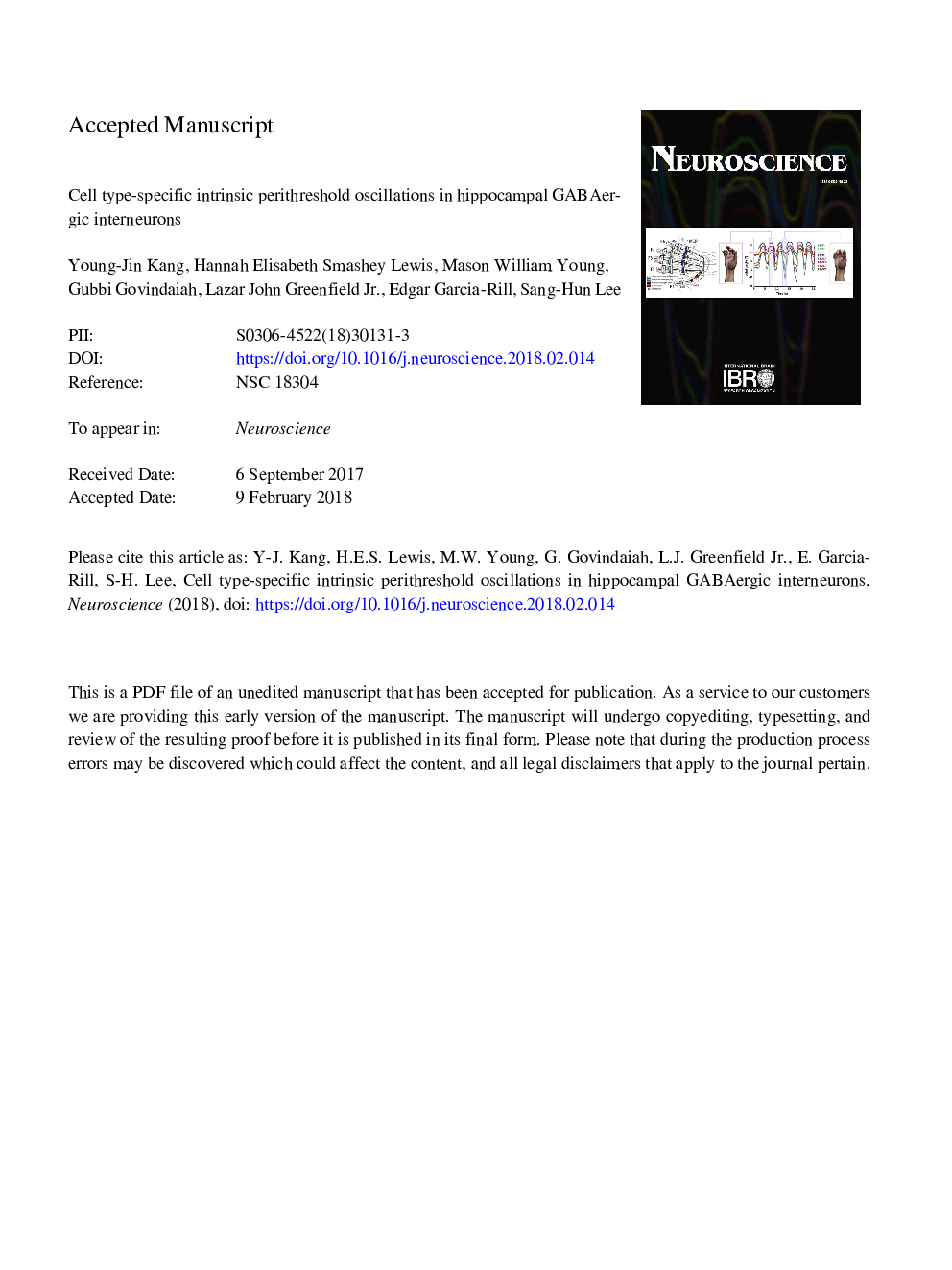| Article ID | Journal | Published Year | Pages | File Type |
|---|---|---|---|---|
| 8840862 | Neuroscience | 2018 | 45 Pages |
Abstract
The hippocampus plays a critical role in learning, memory, and spatial processing through coordinated network activity including theta and gamma oscillations. Recent evidence suggests that hippocampal subregions (e.g., CA1) can generate these oscillations at the network level, at least in part, through GABAergic interneurons. However, it is unclear whether specific GABAergic interneurons generate intrinsic theta and/or gamma oscillations at the single-cell level. Since major types of CA1 interneurons (i.e., parvalbumin-positive basket cells (PVBCs), cannabinoid type 1 receptor-positive basket cells (CB1BCs), Schaffer collateral-associated cells (SCAs), neurogliaform cells and ivy cells) are thought to play key roles in network theta and gamma oscillations in the hippocampus, we tested the hypothesis that these cells generate intrinsic perithreshold oscillations at the single-cell level. We performed whole-cell patch-clamp recordings from GABAergic interneurons in the CA1 region of the mouse hippocampus in the presence of synaptic blockers to identify intrinsic perithreshold membrane potential oscillations. The majority of PVBCs (83%), but not the other interneuron subtypes, produced intrinsic perithreshold gamma oscillations if the membrane potential remained above â45â¯mV. In contrast, CB1BCs, SCAs, neurogliaform cells, ivy cells, and the remaining PVBCs (17%) produced intrinsic theta, but not gamma, oscillations. These oscillations were prevented by blockers of persistent sodium current. These data demonstrate that the major types of hippocampal interneurons produce distinct frequency bands of intrinsic perithreshold membrane oscillations.
Keywords
APVA-type K+ currentCGP55845PVBCSR95531NBQXINaPCREnNOSN-methyl-d-aspartateNMDATTXCCKHEPESSCANPYAMPAaCSF2-amino-5-phosphonopentanoic acid4-(2-hydroxyethyl)-1-piperazineethanesulfonic acidα-amino-3-hydroxy-5-methyl-4-isoxazolepropionic acidfast-spiking interneuronstetrodotoxinDelayed rectifier currentResonancePersistent sodium currentneuronal nitric oxide synthaseartificial cerebrospinal fluidNetwork oscillationaction potentialCre recombinasecholecystokininGABANeuropeptide Y
Related Topics
Life Sciences
Neuroscience
Neuroscience (General)
Authors
Young-Jin Kang, Hannah Elisabeth Smashey Lewis, Mason William Young, Gubbi Govindaiah, Lazar John Jr., Edgar Garcia-Rill, Sang-Hun Lee,
